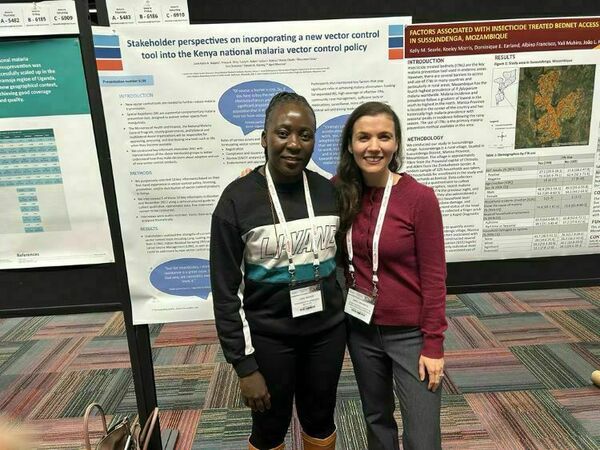
"As part of the AEGIS work, led by the University of Notre Dame and funded by Unitaid, Johns Hopkins and Kenya Medical Research Institute (KEMRI) researchers have been conducting social science research to understand peoples’ experiences with the product and how it fits into the broader malaria prevention landscape.
For example, Johns Hopkins and KEMRI found that some people in the spatial repellents trial reported they had stopped using bed nets because they assumed they were no longer needed. That was an unintended consequence and the finding prompted additional communication to households about the importance of continuing to use current prevention tools while new ones are tested.
“We have been collecting really rich and comprehensive information on what it would take for this product to be successful, what it would take for it to be implemented successfully, and scaled up successfully,” says CCP’s April Monroe, who has played a key role in the work. “And that involves talking to end users over time to understand their experiences, identifying potential challenges that might need to be overcome and identifying how to position and communicate about this tool effectively.”
Read more of this blog post from the Johns Hopkins Center for Communication Programs (CCP).
